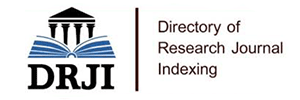
Journal Basic Info
**Impact Factor calculated based on Google Scholar Citations. Please contact us for any more details.Major Scope
- Sarcomas
- Radiation Therapy
- Kidney Cancer
- Ovarian Cancer
- Gastrointestinal Cancer
- Gynecological Cancers
- Brain and Spinal Cord Cancer
- Carcinomas
Abstract
Citation: Clin Oncol. 2023;8(1):2006.DOI: 10.25107/2474-1663.2006
Hormone-Resistant Prostate Cancer: Sociodemographic, Clinical, Biochemical, Computed Tomography and Anatomo-Histopathological Profile at the Laquintinie Hospital in Douala
Axel Stéphane NM, Cedrick FJ, Yvan FT, Gildas Boris TK, Edouard Hervé MM and Angwafo III F
Department of Medicine and Biomedical Sciences, University of Yaounde I, Cameroon
Higher Institute of Health Sciences, Université des Montagnes (UdM), Cameroon
Fondation Médicale Sainte Trinité. Yaounde, Cameroon
Department of Medicine and Pharmaceutical Sciences, University of Douala, Cameroon
*Correspondance to: Nwaha Makon Axel Stéphane
PDF Full Text Research Article | Open Access
Abstract:
Prostate cancer is a common malignant tumor which develops from prostate cells, it is likely to be controlled by medical castration using a hormone therapy. But, most often during the treatment, resistance to hormone therapy, also called resistance to medical castration can take place. This term is defined by a reappearance or non-regression of the disease after well-conducted hormone therapy. The objective of this work was to describe the social demographic, clinical, biological, computed tomography and anatomo-histopathological characteristics of patients with hormone-resistant prostate cancers at the Laquintinie Hospital in Douala, Cameroon. We carried out a descriptive cross-sectional study with retrospective collection within urology and oncology departments of the Laquintinie Hospital in Douala (LHD) over a period of 10 years from January 2009 to December 2019. Hormone-resistant prostate cancer accounted for 40% ± 8.48 of all identified prostate cancers. The average age of patients in our study was 63.44 years ± 9.27. The most represented age group was between 60 and 65 years old with a proportion of 40.4%. The most represented clinical signs were urinary signs (67.3%), lumbar pain (57.7%), and deterioration of general condition (42.31%). The average PSA level in our study was 195.1 ng/ml. The time to progression to resistance was in mean of 15.17 months ± 3.89. Hormone therapy was consisting essentially of analogues of LH-RH, antiandrogens and a second-line hormone therapy. Knowledge of the frequency of hormonotherapyresistant prostate cancer and its characteristics highlight the important of this public health problem in Cameroon.
Keywords:
Cancer; Douala; Laquintinie Hospital; Hormone-resistant; Hormone therapy; Prostate; PSA
Cite the Article:
Axel Stéphane NM, Cedrick FJ, Yvan FT, Gildas Boris TK, Edouard Hervé MM, Angwafo III F. Hormone-Resistant Prostate Cancer: Sociodemographic, Clinical, Biochemical, Computed Tomography and Anatomo- Histopathological Profile at the Laquintinie Hospital in Douala. Clin Oncol. 2023;8:2006..













